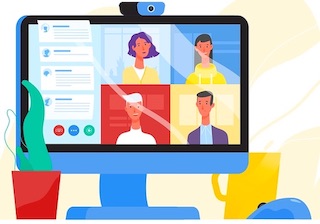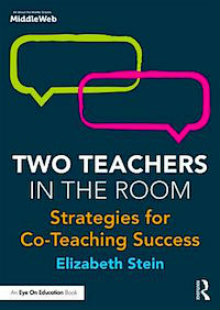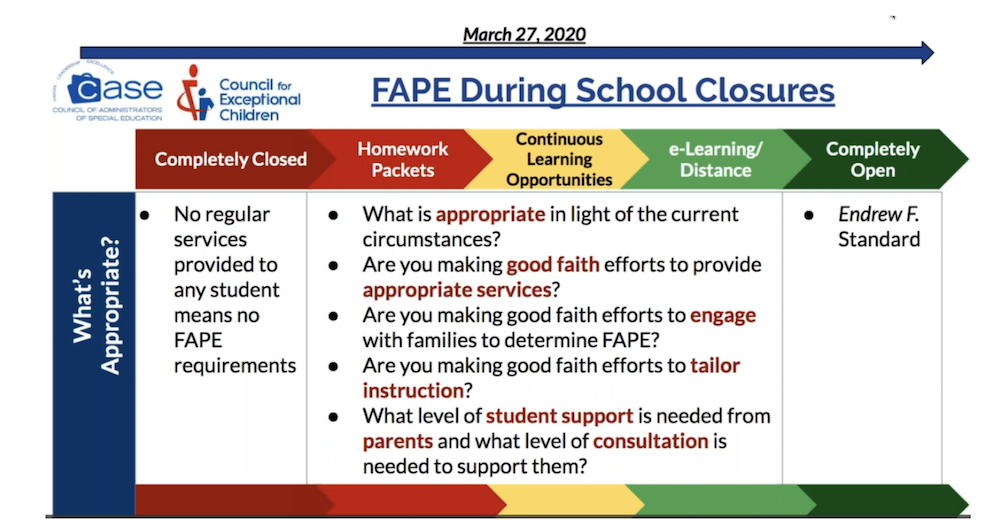What Can Co-Teachers Do as a Virtual Team?
A MiddleWeb Blog

First of all: how lucky are we?! If we’re co-teachers, we have a naturally embedded partner to figure out this process along with us…we are not alone!
If co-teaching is an attitude of sharing the classroom and students – then what does that mean when our classroom is literally beyond the walls that usually hold us together?
For co-teachers, I think it can mean 3 things:
We Need to Be Resilient – Co-teachers must always be thinking: We are teaching and learning together! We will be in this process of teaching and learning from home…together!
We Need to Be Reciprocal – Co-teachers must ask: How can I show my co-teacher I care? Co-teachers must also maintain an attitude of: I have to care for myself so I can care for my co-teacher (and of course, students and families!)
We Need to Be Responsible – Co-teachers must ask: What is my specific role, and how am I fulfilling this responsibility?
As we make sense of teaching and learning from home, co-teachers should keep in mind that our students are first and foremost general education students. However, we must make sure we are also intentionally providing the specially designed instruction each student needs to access and make meaning from the general education curriculum.
The Council for Exceptional Children (CEC) offers resources to guide our decisions and provide us with some peace of mind to know that we are doing all we can – together.
The first step in this unpredictable journey is to remember to remain open, flexible, and collaborative as this process emerges more fully. Our decisions for creating and implementing accessible and meaningful learning experiences for students will be evolving over time as we see how specific students interact and perform.
So how will teachers know what to do…and how to do it? I believe it’s CEC to the rescue!

These leaders offer four priorities to anchor our instructional decisions. Below I summarize my take on how co-teachers may specifically act upon these necessary focal points. It all begins with some serious online discussion AMONG you and your colleagues.
1. Focus on the safety, health, and welfare of our students, families, communities and ourselves.
Set boundaries for your time and space. Make sure that you set up your work space at home in a manner that supports your physical and emotional well-being. Walk away from your workspace for much needed breaks. Set schedules so you may know when it is time to work and when it is time for you to stop.
Make sure to spend some self-care time and also time with your own family members. Provide the same guidance for your students and their families.
Engage in and share mindful activities with others.
Keep a journal to jot down how you are feeling. This personal time may do wonders in helping us learn more about managing emotions and maintaining a calm, cool, collected mindset.
Listen with empathy and compassion to your co-teacher, students and their families.
2. Provide a Free and Appropriate Public Education (FAPE) to the absolute best of our human capabilities.
✻ Be reasonable and keep things manageable – stay calm and let your creativity flow!
✻ Self-Regulation – let’s guide our learners to be resourceful.
✻ Engage with all students – make sure both teachers are communicating with all students.
✻ Embed learning tools and strategies that are necessary for a few students but helpful for all.
✻ Teach through technology: Chrome Extensions and Apps for Inclusive Education
✻ Maintain equity by providing access to materials for all learners – with the understanding that you will be emailing or having phone conversations with individual students to provide further supports.
3. Document your “good faith” efforts in a focused, clear, and consistent manner.
Are you making good faith efforts to provide the best learning experiences for your students? Are you making good faith efforts to tailor instruction to the absolute best of your abilities? How are you meeting the individual needs?
Are you supporting parents by using prep sheets, additional phone calls, and other additional efforts to engage with families? How are you simplifying a powerful learning opportunity for parents and students?
Ask yourself: How am I directly applying and naturally embedding specially designed instruction? For example, what strategies, technology tools, graphic organizers, visual weekly and daily schedules, or any other ways are you providing thoughtful additional support to students?
✻ Collect completed student work packets and student journal/writing entries.
✻ Stay organized! Create a Google folder for each special education student to hold evidence of student performance toward progress monitoring of Individual Education Plan (IEP) goals.
✻ Special education teachers, keep a running document on the specific ways you are specially designing instruction (SDI).
✻ Use your documentation in determining what accommodations and modifications your students will need for upcoming assignments.
4. The Individuals with Disabilities Education Act (IDEA) does not outline specifics on what to do during a pandemic.
However, we have the awareness, knowledge and skill set to move forward with the integrity of the purpose of the law. We must keep compliance in mind – with the understanding that IDEA was not prepared for this extended school closure scenario.
IEP teams need to continue to make good faith efforts in complying with procedures. We must work as a team and ask: How may we achieve specific procedures “in light of the current circumstances”? We must use the expertise of everyone on our IEP team to share how we each put our absolute best efforts into caring and providing the best we can for our students.
I hope this post brings about peace of mind. We are all in a place of learning as we make our way through this unexpected and stressful time. What is it that you may do to provide a sense of calm in your co-teaching situation for you, your co-teacher and students’ families?





































